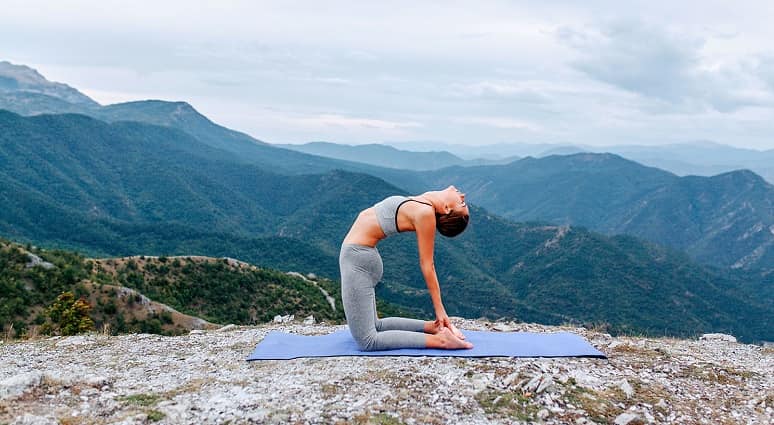Embarking on the journey to become a yoga teacher in the idyllic setting of Costa Rica is a transformative and rewarding endeavor. The lush landscapes, serene beaches, and vibrant culture of this Central American gem provide an inspiring backdrop for aspiring yoga instructors. This guide will explore the steps and considerations involved in becoming a certified yoga teacher in Costa Rica, from selecting the right training program to understanding the unique cultural and regulatory aspects that shape the teaching experience in this tropical haven.
Become a Yoga Teacher in Costa Rica
1. Choosing the Right Yoga Teacher Training Program:
Selecting the right yoga teacher training program is a pivotal decision on the path to becoming a certified instructor, particularly in the vibrant setting of Costa Rica. The 200-hour yoga teacher training class held in Costa Rica is a recognized benchmark, offering a comprehensive curriculum that encompasses the essential aspects of yoga instruction.
Prospective teachers should consider factors such as the program’s accreditation, faculty expertise, and the inclusivity of the curriculum to ensure a well-rounded education. Yoga teacher training in Costa Rica, known for its immersive and transformative experience, integrates both theoretical knowledge and practical skills necessary for teaching with confidence.
By making an informed choice in selecting the right yoga teacher training program, aspiring instructors set a solid foundation for a fulfilling and successful journey into the world of yoga instruction in the captivating backdrop of Costa Rica.
2. Understanding Cultural Sensitivities:
Costa Rica is known for its warm and inclusive culture. Aspiring yoga teachers should familiarize themselves with the cultural sensitivities and customs of the local community. Respectful engagement and a willingness to integrate with the community will enhance your teaching experience.
Incorporating elements of Costa Rican culture into your classes, such as local sayings or traditional practices, can create a deeper connection with students. Awareness of cultural nuances will contribute to a harmonious teaching environment and foster a sense of inclusivity among your students.
3. Embracing the Pura Vida Lifestyle:
Costa Rica is famous for its “Pura Vida” lifestyle, emphasizing a laid-back and joyful approach to life. As a yoga teacher, embracing this philosophy can profoundly impact your teaching style. Infuse your classes with the spirit of Pura Vida, encouraging students to find joy, gratitude, and simplicity in their practice.
Create an atmosphere that reflects the balance between nature, well-being, and community – essential elements of the Costa Rican way of life. Integrating Pura Vida into your teaching philosophy will resonate with locals and expats alike, fostering a sense of unity and well-being.
4. Navigating Certification and Permits:
Ensuring you have the necessary certifications and permits is essential for teaching yoga in Costa Rica. Obtain a Yoga Alliance certification, which is widely recognized and respected. Additionally, research and comply with any local regulations or permits required by Costa Rican authorities.
Engage with local yoga communities and networks to gain insights into the regulatory landscape and connect with experienced teachers who have successfully navigated the certification and permit process. Securing the proper credentials demonstrates your commitment to professionalism and respect for local regulations.
5. Creating a Nature-Infused Teaching Approach:
Costa Rica’s abundant natural beauty provides a unique opportunity to create a nature-infused teaching approach. Consider incorporating outdoor classes, beach sessions, or jungle retreats into your teaching repertoire. Harness the healing power of Costa Rica’s ecosystems, integrating elements of nature into your sequences and meditation practices.
This connection with the environment enhances the overall yoga experience, providing students with a deeper sense of connection and grounding. Emphasizing a nature-infused teaching approach not only aligns with the spirit of Costa Rica but also sets your classes apart in this tropical yoga haven.
Conclusion:
Becoming a yoga teacher in Costa Rica is a harmonious blend of selecting the right training program, understanding cultural dynamics, embracing the Pura Vida lifestyle, navigating certification and permits, and creating a nature-infused teaching approach.
This transformative journey not only equips aspiring teachers with the skills and knowledge to guide others on their yogic paths but also allows them to immerse themselves in the vibrant and welcoming culture of Costa Rica.
As you embark on this adventure, remember that Costa Rica’s unique charm and natural beauty can enhance your teaching style and create a truly enriching experience for both you and your students.
